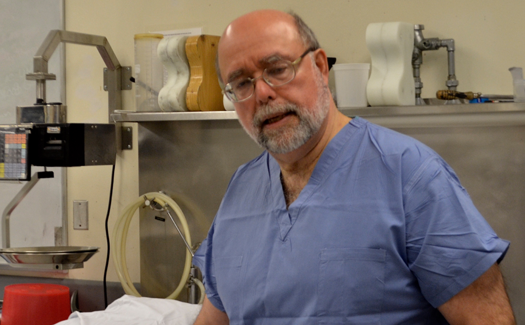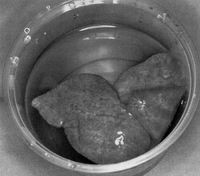Dr Andrew discusses a pediatric case that offers A Cautionary Tale Regarding Dogmatic Certainty
 Particularly in the case of the death of a newborn infant, the investigation of every sudden, unexpected or violent death requires a holistic approach, utilizing historical and investigative data, statements of witnesses if available, the autopsy and all associated ancillary studies. Interpreting autopsy findings in a vacuum with unwavering, dogmatic certainty is hubris at best and can lead to incarceration of the innocent at worst. There are few cases that highlight these dangers as starkly as cases of the surprise discovery of the remains of a newborn. These cases are fraught with emotion, particularly when a young woman or adolescent faces charges of murdering and disposing of her live-born baby.
Particularly in the case of the death of a newborn infant, the investigation of every sudden, unexpected or violent death requires a holistic approach, utilizing historical and investigative data, statements of witnesses if available, the autopsy and all associated ancillary studies. Interpreting autopsy findings in a vacuum with unwavering, dogmatic certainty is hubris at best and can lead to incarceration of the innocent at worst. There are few cases that highlight these dangers as starkly as cases of the surprise discovery of the remains of a newborn. These cases are fraught with emotion, particularly when a young woman or adolescent faces charges of murdering and disposing of her live-born baby.
The scenario varies only slightly from case to case. In a case in which I recently provided an opinion a woman with substance abuse issues had been able to hide her pregnancy from public knowledge and while alone in her home, delivered what she believed to be a dead fetus. She described the newborn as limp, blue and not beathing. The apparent stillborn infant was wrapped in a blanket, placed in a plastic bag and placed in a trash container. The situation was soon discovered, and the body was retrieved and sent to the medical examiner’s office for autopsy.
The central issue in this case was determination of live birth versus stillbirth. The Medical Examiner opined live birth based on, “inflated lungs, subgaleal petechiae, and visceral pleural petechiae.” Petechiae can have any number of mechanisms as it simply represents a differential pressure phenomenon in small capillaries resulting in pinpoint hemorrhages (petechiae). Passage through the birth canal could induce enough pressure to cause the petechiae and are not specific to live birth.
More problematic was the reliance on lung findings to diagnose live birth. The issue of the “float test” in specific has virtually no sensitivity or specificity with regard to the issue at hand. Its value has been questioned in the medical literature for nearly 100 years.
 Dogmatic certainty emanates from the myth that a stillborn, having never taken a breath will have lungs that sink in water, while an infant born alive will fill his or her lungs by taking at least one breath, thus making the lungs float. This is no more accurate than witchfinders in Salem claiming innocents will float and witches will sink.
Dogmatic certainty emanates from the myth that a stillborn, having never taken a breath will have lungs that sink in water, while an infant born alive will fill his or her lungs by taking at least one breath, thus making the lungs float. This is no more accurate than witchfinders in Salem claiming innocents will float and witches will sink.
As recently as 2004 a prominent forensic pathology text stated, “There are too many recorded instances when control tests have shown that stillborn lungs may float and the lungs from undoubtedly live-born infants have sunk, to allow it to be used in testimony in a criminal trial. Even one such failure negates the whole history of the test and the authors are saddened to contemplate the number of innocent women who were sent to the gallows in previous centuries on the testimony of doctors who had an uncritical faith in this crude technique.” A literature review by Milroy, published in 2012 reached the same conclusion.
Quite simply, the appearance of air in the lungs grossly or even microscopically is not enough to carry the weight of a diagnosis of live birth. It is generally accepted that, save for identifiable food (colostrum, milk, formula) in the stomach, the autopsy alone is silent on the issue of live versus still birth. Few can summarize the dilemma better than Dr. Lester Adelson in his book, The Pathology of Homicide: A Vade Mecum for the Pathologist, Prosecutor and Defense Counsel. “Complete gross autopsy and painstaking microscopic studies do not always give satisfactory answers as to cause or mechanism of death in many stillbirths and neonatal deaths which occurred with competent medical attention. Even more insurmountable can be the problems faced by the pathologist who examines a child who’s antenatal, intranatal, and neonatal courses were not witnessed by any person willing or able to tell what transpired.” Such is the tragedy in this and many other such cases.

